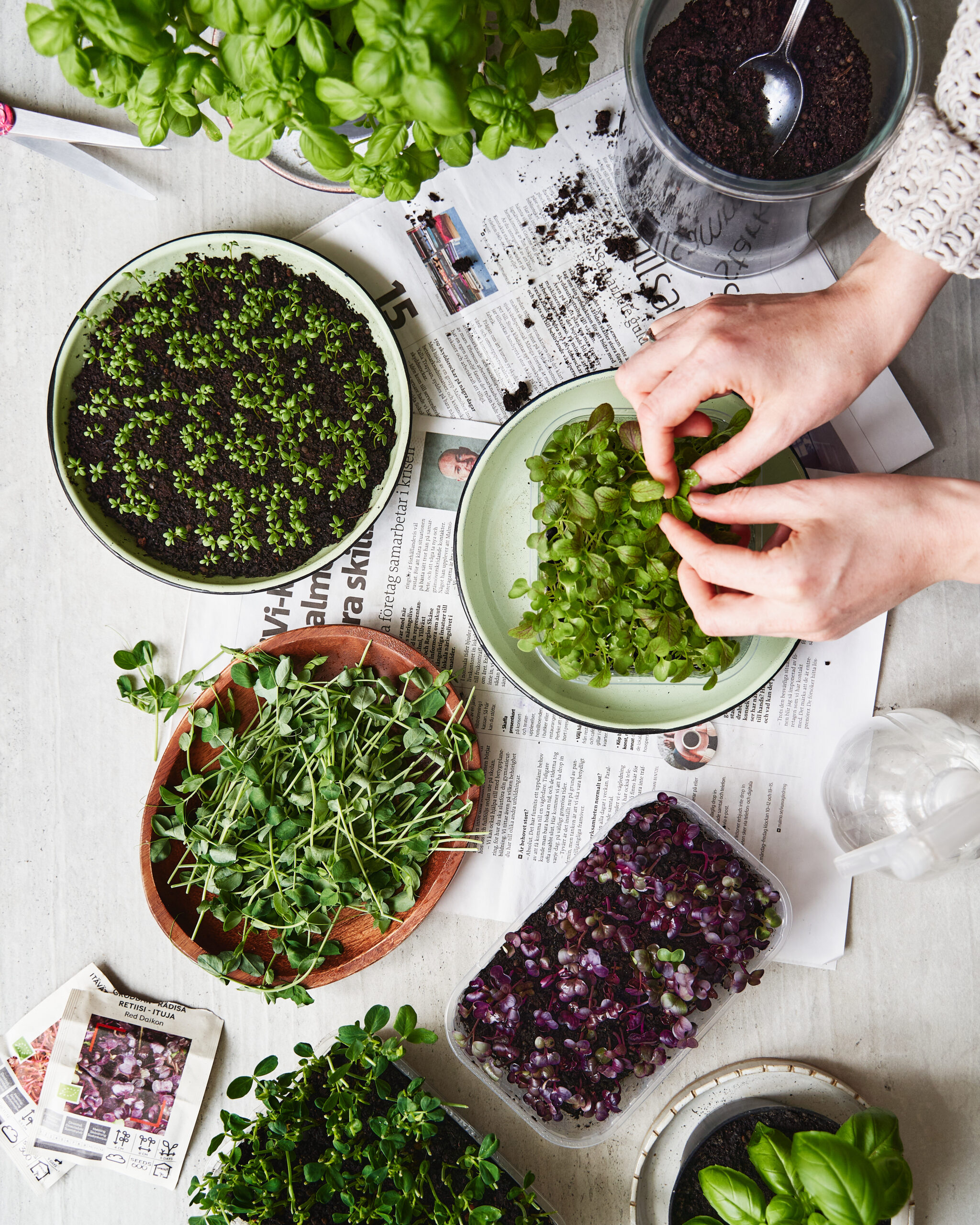The Role of Microgreens in Plant-Based Diets: Nutritional Insights
Microgreens are more than just edible vegetables—they're a nutritional powerhouse packed with beneficial plant compounds. These young vegetable greens, harvested at an early growth stage, offer a higher nutritional punch than their mature counterparts. From radish microgreens to basil microgreens, these tiny greens provide an antioxidant-rich boost to plant-based diets.
Grown indoors or outdoors, microgreens vary in flavor, texture, and nutritional content, making them a versatile addition to meals. Whether you're adding fenugreek microgreens to pasta dishes or enjoying fresh greens in salads, eating microgreens supports human health, immune function, and even cardiovascular health. With a short shelf life but intense flavor, these functional foods are a delicious way to elevate healthy diets.
Table of Contents:
- Understanding Microgreens
- Growing Microgreens
- Plant-Based Diets
- Why Microgreens Are a Perfect Fit for a Plant-Based Diet
- Incorporating Microgreens into Plant-Based Diets
- Young Vegetable Greens: A Sustainable Food Choice
- Conclusion
1. Understanding Microgreens
1.1 The ABCs of Microgreens 🌱
- Microgreens are young, nutrient-dense versions of leafy greens and other vegetables.
- They are harvested within 1-3 weeks of germination, when the plants are 7-15 tall.
- Microgreens are smaller, and younger than baby greens but have a more delicate flavor and higher nutrient content. They are not the same as sprouts, which are harvested earlier and have distinct characteristics.
- They are a great addition to plant-based diets, offering a concentrated dose of beneficial plant compounds.
1.2 Types of Popular Microgreens
Microgreens are a delightful addition to any plant-based diet, offering a burst of flavor and a wealth of nutrients in every bite. These young vegetable greens are harvested at their peak, ensuring they are nutrient dense and packed with essential nutrients. Here are some popular types of microgreens that you might want to try:
- Pea Shoots: Known for their sweet, tender flavor, pea shoots are a fantastic source of protein. They add a delightful crunch as garnish to dishes like salads and sandwiches.
- Radish Microgreens: With their bold, spicy kick and peppery flavor, radish microgreens add a zesty twist to any dish. Packed with vitamin C and potassium, they’re as nutritious as they are delicious. Looking to spice things up? Try vibrant varieties like Radish Red Rambo, Radish Daikon, or Radish Rose for a flavorful boost and a pop of color on your plate.
- Basil Microgreens: With their sweet, aromatic flavor, basil microgreens bring a fresh, flavorful twist to any meal. Packed with vitamin K and powerful antioxidants, they’re perfect for elevating dishes like pasta, pizza, salads, and more. For an extra burst of flavor, try varieties like Italian Basil or the uniquely fragrant Cinnamon Basil.
- Cilantro Microgreens: Offering a fresh, citrusy flavor, cilantro microgreens are high in vitamin K and antioxidants. They are a wonderful addition to tacos, salads, and salsas.
- Kale Microgreens are a nutritional powerhouse, loaded with vitamins A, C, and K, along with a healthy dose of calcium and iron. Their mild, slightly earthy flavor makes them incredibly versatile—perfect for adding to salads, smoothies, sandwiches, and more. Looking for delicious options? Try Kale Tuscan Black or Kale Red Russian microgreens for a fresh, nutrient-packed boost.You can discover more about the most popular microgreens on our blog: ,,The Most Popular Microgreens Your Customers Will Love: Grow the Best Varieties”.
1.3 What Are Microgreens Made Of? 🌱🔬
Microgreens are young plants harvested at the early growth stage—typically between 1 to 3 weeks after sowing—once they’ve developed their first set of cotyledon leaves and sometimes their first pair of true leaves. Their composition can be broken down into several key groups:
1️⃣ Water 💧
Microgreens are composed of about 85-95% water, making them easy to digest and excellent for keeping the body hydrated.
2️⃣ Plant-Based Protein 💪
They’re a great source of high-quality plant protein, including essential amino acids that our bodies can't produce on their own.
Here are some protein-rich microgreens:
🔹 Pea Shoots – 3-5 g protein per 100 g
🔹 Sunflower Microgreens – 2-3 g protein per 100 g
🔹 Amaranth Microgreens – 3.8 g protein per 100 g3️⃣ Vitamins and Minerals ⚡
Microgreens are a concentrated source of vitamins and minerals—often containing several times more nutrients than their mature counterparts!
Most common vitamins found in microgreens include:
✅ Vitamin C (boosts immunity, enhances iron absorption)
✅ Vitamin A (supports vision and healthy skin)
✅ B Vitamins (nervous system support)
✅ Vitamin K (blood clotting, bone health)
✅ Vitamin E (a natural antioxidant, slows aging)Common minerals include:
✔ Iron (important for red blood cell production)
✔ Calcium (supports strong bones and teeth)
✔ Magnesium (benefits the nervous system, reduces stress)
✔ Potassium (regulates blood pressure)4️⃣ Antioxidants 🛡
Microgreens are packed with antioxidants—natural compounds that protect the body from free radicals, slow aging, and reduce inflammation.
Examples of potent antioxidants in microgreens:
🔹 Sulforaphane – found in broccoli microgreens, known for its anti-cancer properties
🔹 Anthocyanins – found in red cabbage microgreens, support healthy circulation
🔹 Flavonoids – found in cilantro microgreens, have anti-inflammatory effects5️⃣ Fiber 🌾
Despite their small size, microgreens provide a good amount of fiber, which:
✔ Supports digestion
✔ Helps regulate blood sugar levels
✔ Promotes a feeling of fullnessFiber-rich microgreens include:
🥦 Broccoli Microgreens
🌿 Radish Microgreens
🥬 Beet Microgreens6️⃣ Phytochemicals (Bioactive Compounds) 🌍
These are natural plant compounds that work like medicine in the body, strengthening the immune system and protecting against disease.
Key phytochemicals in microgreens include:
🔥 Glucosinolates – found in cabbage and radish microgreens, offer anti-cancer benefits
🌿 Lutein and Zeaxanthin – found in spinach microgreens, support eye health
🩸 Betalains – found in beet microgreens, help cleanse the bloodThat’s why microgreens are a superfood that deserves a spot in every healthy diet! 🌱🚀
2. Growing Microgreens
Growing and Harvesting Processes
- Microgreens can be grown from many different types of seeds, including cereals, legumes, and other plant families.
- They can be grown indoors, in greenhouses or even in your own apartment or outdoors, and require minimal equipment and space.
- Microgreens are typically grown in a soil-less medium and require very little water.
- They are harvested when their leaves are just a few inches tall, and can be grown year-round.
- Various environmental factors, such as light, air and nutrient availability, influence plant growth and the concentration of bioactive compounds in microgreens.
Curious about the unique specs and harvesting tips for each of our microgreens?
You'll find all the details you need with every product on our website! 🌱


